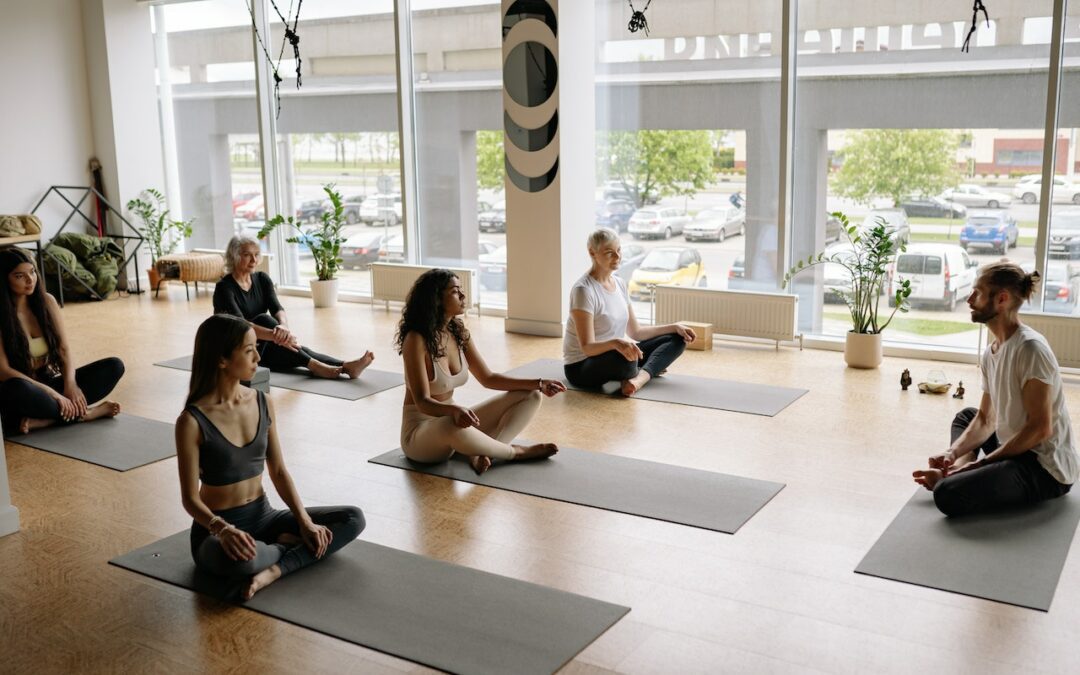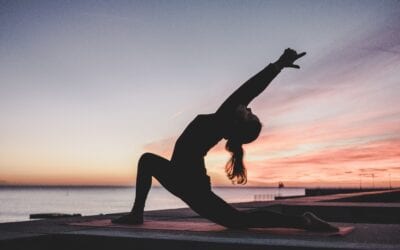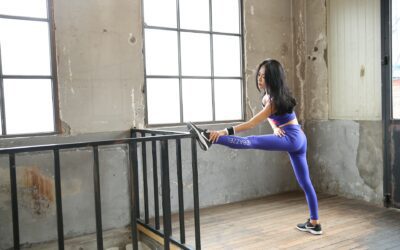|
|
We live in a time where technology has made it possible to work from home or from any place in the world, and so many people have renounced the traditional office for the possibility to work under the Northern Lights in Reykjavik or in the ancient ruins in Athens. This trend has opened up unprecedented opportunities, however, some of the pressing issues have remained the same.
One of the pitfalls of spending too much time sitting in a chair and staring at a computer screen is poor posture which can result in neck pain and consequently shoulder pain. To counter the effects of sitting for hours on end and reverse the effect of the so-called “tech neck” you can try doing some yoga poses on a daily basis to stretch and strengthen the muscles. They can offer great release and ease to these areas that might have been posturally misaligned and filled with muscular tension.
What Is Tech Neck?
When looking down at your phone or working on a computer, the muscles in the back of your neck contract to support your head up. The more you look down, the harder your muscles have to work to keep your head up. These muscles can get sore, stiff, and weakened, which is what we refer to when we say “tech neck.”

Understanding How the Body Works
An effective approach towards neck and shoulder pain must include both stretching the muscles that commonly become tight as well as strengthening those that are often weak. Typically, the majority of people working at a desk end up slouching forward when they feel tired. This posture tightens the muscles around the front of the shoulders, arms, chest, and neck, while over-stretching and weakening the muscles around the upper back.
So, to follow this simple concept, the muscles in the front of the body need to be lengthened back to their optimal, resting length, while the muscles at the back need to be shorted and strengthened.
The Epidemic of Neck Pain
The National Institutes of Health reports that neck pain is one of the most common musculoskeletal disorders and a major problem in modern society.
Because there are so many nerve pathways connecting the neck and shoulders, the pain in these areas often overlaps. The soft tissue that connects the neck to the shoulders can make it difficult to determine the precise source of pain.
A major factor why neck and shoulder pain is on the rise is spending hours in improper posture in front of a computer, tablet, or smartphone. As the spine slumps forward – the shoulder blades slide apart, overstretching and weakening the surrounding muscles. Those weakened muscles are more probable to experience painful tightness along the shoulder blades and in the neck.
Neck and shoulder pain can be treated in a variety of ways. However, yoga is most often recommended as an additional therapy. In addition to its therapeutic benefits, yoga improves body awareness and pain acceptance.
How Does Yoga Help With Neck Pain?
Regular yoga practice can help to correct your body’s alignment and ease unnecessary tension from your neck and shoulders. It also aids to reduce stress, and inflammation and increases movement in the neck, while bringing balance back to your body.
Yoga can be a useful treatment for relieving neck pain. The following are some potential ways that yoga can ease neck pain and tension:
- Correcting imbalances in the muscles
- Strengthening the muscles that are stabilizing and controlling the neck, shoulders, and head
- Improving overall posture
- Improving the quality of sleep
- Increasing mobility in the cervical spine and shoulders.
Yoga Poses for Neck and Shoulder Pain
These beginner-friendly yoga poses are purposely chosen because they allow you to target and release muscle tension in your neck and shoulders. For the best results from your yoga practice, ease into each pose slowly and focus on your breathing, body position, and muscle activation.
Ear-To-Shoulder Pose
This is a simple pose that you can do in almost any place. The posture stretches the trapezius and shoulder muscles and allows for easier lateral neck movement. As long as the spine is straight, this position can be done either standing or sitting.
Put your arms at your sides and start by gazing straight ahead. As you exhale, lower your right ear toward your right shoulder. Take a deep breath. Aim to keep your head on the same level as your shoulders by avoiding bending your head forward or back. Exhale as you move to the left and inhale as you bring your head back to the center. Put your right hand on the left side of your head, and gently press toward your right shoulder to deepen the stretch. Allow the weight of your hand to softly lower your head instead of pulling it over.
Neck Rolls
This can be a strong release, but go slowly and pay attention to how it feels in your neck. Sit comfortably on the floor or in a chair with both feet on the ground. Take a big breath in and bring your chin to your chest as you exhale. Some people find it comfortable to roll their neck in a full circle, inhaling as they roll their head back and exhaling as they roll it forward, chin to chest. Others may experience painful cervical spine compression as they roll their heads back. Pay close attention to how the movements feel.
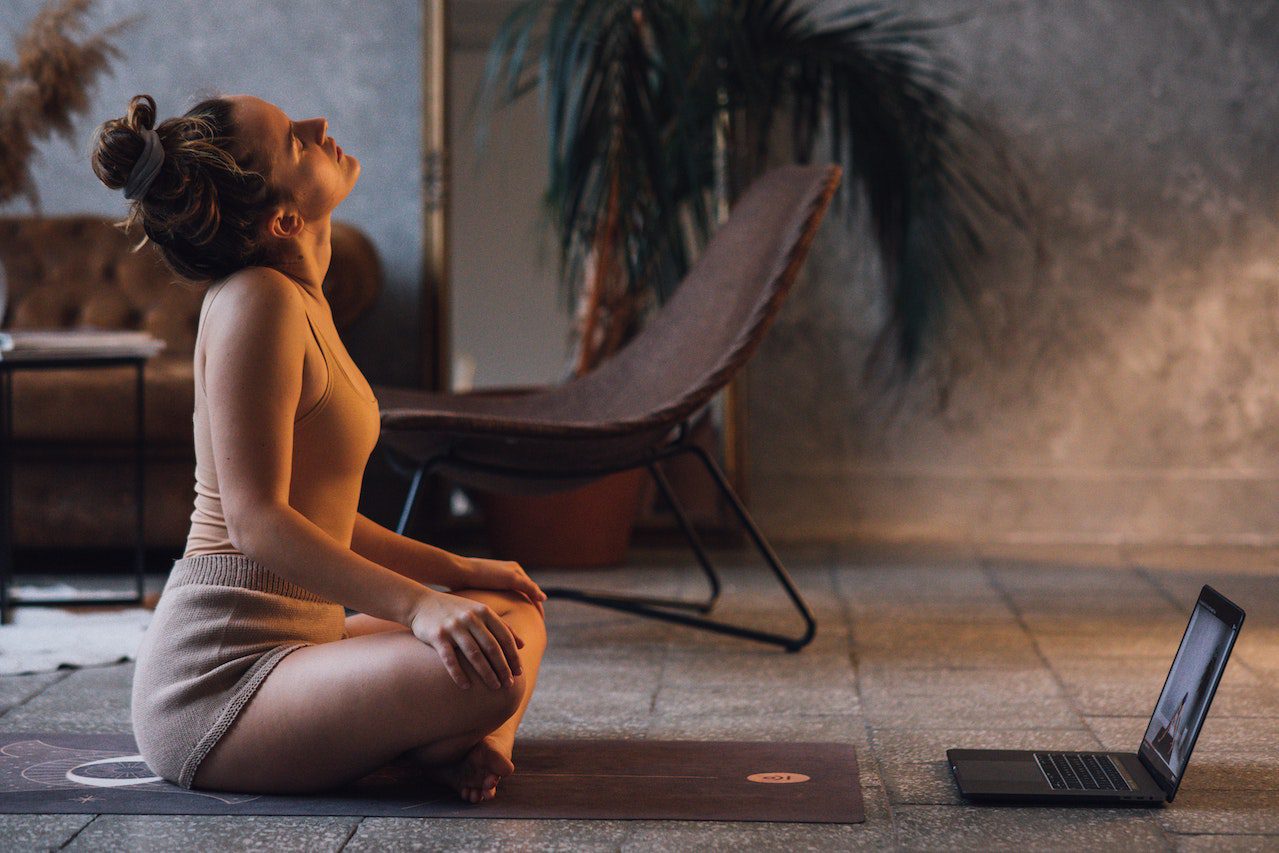
Hand Clasps Behind Back
Another posture that is quite beneficial for those who have tight shoulders or shoulder blade pain of any kind. Simply put, you stand straight, interlock your hands behind your back, and straighten your arms as far as you can while clutching tightly. Tuck your chin as far into your chest as you can to give your neck an additional stretch while doing this. By simply tightening or loosening your hold, you can modify this pose according to the intensity of the tension in your shoulders.
Child’s Pose / Balasana
Kneel down on the ground. Your toes should be touching as your shins are on the floor. Exhale and place your torso between or over your thighs while keeping your hands by your sides. Another option is to extend the arms straight, having your elbows and hands on the floor. Allow your head to slowly contact the ground. Stay as long as you can in this posture before slowly raising yourself back to the starting position while taking a deep breath. The child’s pose is a deeply calming posture that can be particularly soothing to the neck, shoulders, and back. Additionally, it can help in lowering stress, anxiety, and tension in the mind.
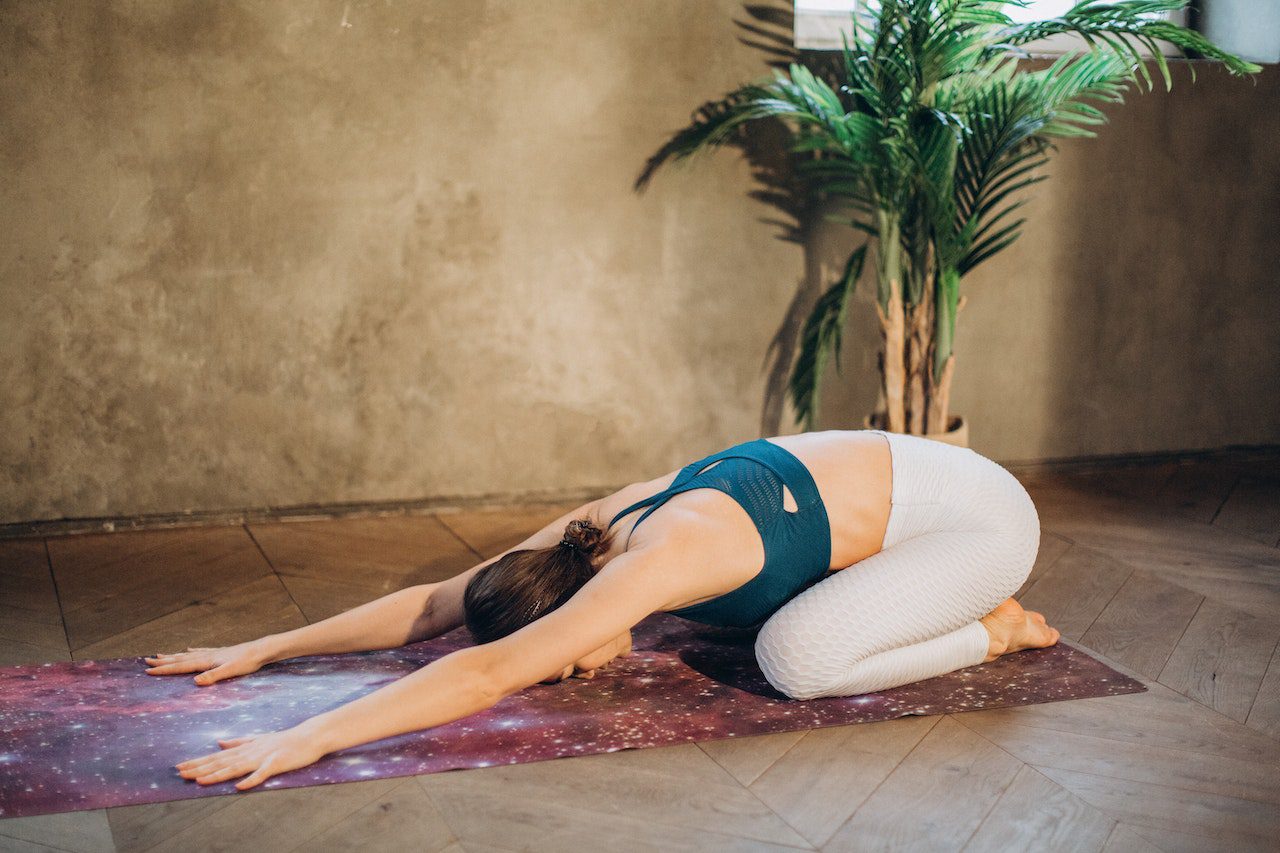
Standing Forward Bend
There’s a good reason why this pose is among the most fundamental you’ll encounter in a beginner’s yoga session. It’s a great way to adjust rounded shoulders and generally reduce stress in the neck and shoulders. Additionally, it extends the hips, calves, and hamstrings.
Start by standing straight up with your feet together and facing front. Roll down slowly till your hands are touching your feet while tucking your chin to your chest. Hold that stretch as you take your time to breathe out. Repetition is important; it’s crucial to roll to the floor gradually, paying attention to your breath, and keeping your chin tucked in at all times.

Seated Twist Pose/ Ardha Matsyendrasana
The seated twist is a fantastic pose that promotes neck flexibility from side to side. Start by sitting on the floor with your hands by your sides and both legs extended in front of you. Bend the right knee and draw the right foot to the outside of the extended left leg. Take a deep breath in and raise your left arm out to the side. Draw your left arm across your body as you exhale so that the elbow softly encircles your right knee. With your fingers pointing away from you, take your right hand and rest it palm down on the ground close to your tailbone. Draw your chin toward your right shoulder while maintaining a straight posture with your head held high in the air. Slightly bend the right elbow to allow the right shoulder to sink down.
Cat/Cow Pose
Start with your shin on the ground and your body positioned like a tabletop (that is with your thighs, torso, and hands). Make sure your wrists, elbows, shoulders, and thighs are all in line and parallel to the floor. Your knees should also be directly below your hips. When you are in this position, breathe in, draw your belly button toward the floor, and elevate your head up. Exhale sequentially, rounding your spine upward and bringing your head inward. Bring your chin gently toward your chest. As you inhale and exhale, continue these movements in sequence.
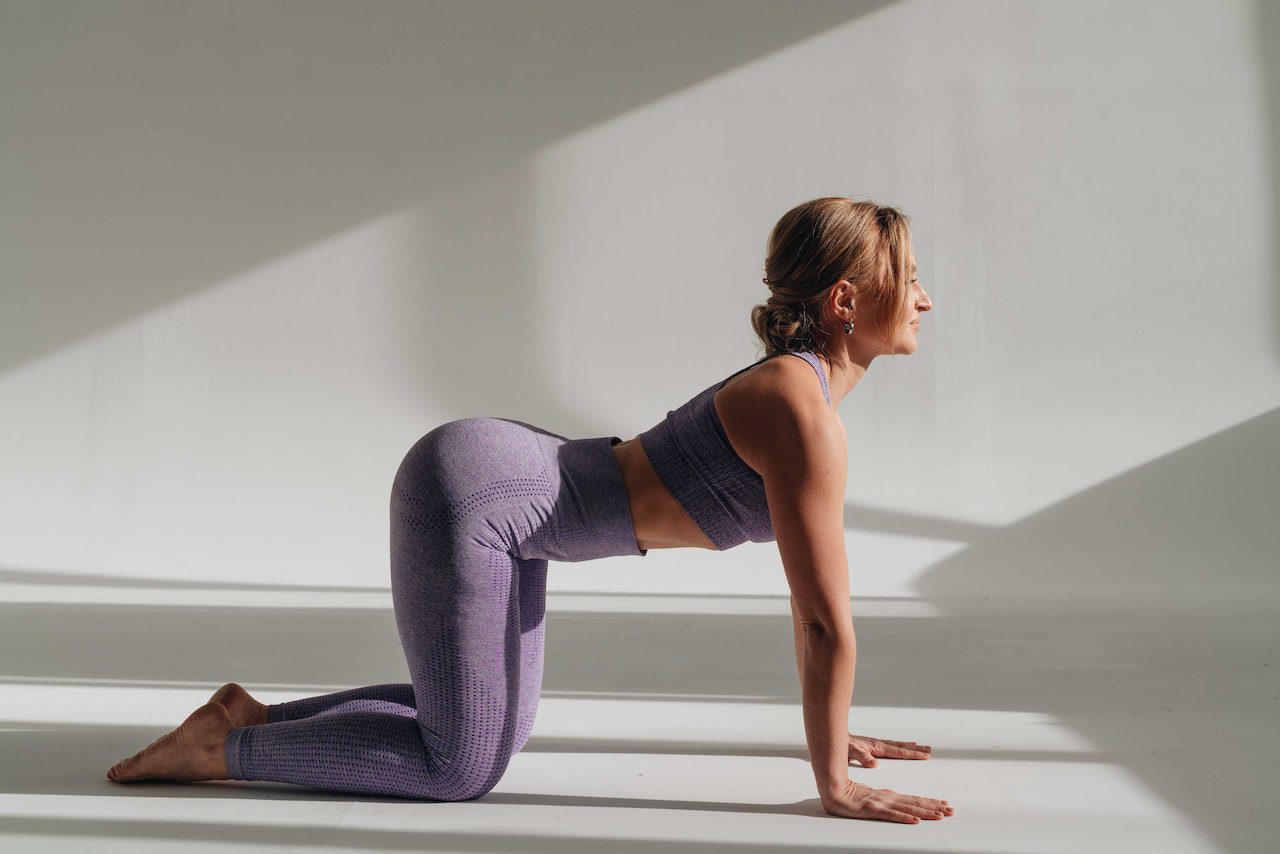
Thread the Needle
The rotator cuff, trapezius, and rhomboids – the shoulder muscles, neck muscles, and muscles that support the head and neck region – are stretched in this restorative position. Tight neck muscles can also create discomfort in the shoulders. Begin in a child’s pose with your knees wider than your shoulders, your big toes touching, and your hips adjusted so that they are closer to your heels. Keep your torso and arms long. Place your left arm, palm facing up, under your right arm, between your right hand and your right knee. Hold the position while deepening the shoulder stretch and expanding your chest with each inhale and exhale. Repeat the same on the opposite side.
Savasana/ Corpse Pose
Corpse posture, also known as relaxation pose, is commonly done at the end of a yoga class and is possibly the most restorative yoga pose in existence. This position is incredibly effective in reducing stress and anxiety while also assisting your mind and body in adjusting to the subtle physiological changes brought on by the poses you’ve done during a yoga session.
Make your way to the floor and lie flat on your back in a corpse pose. Extend your legs straight out on the ground. With your palms facing up, extend your arms out to the sides. Adjust your posture however you need to in order to feel comfortable, whether it’s by moving your hips or your head from side to side or by bringing your shoulder blades closer together. Breathe easily and naturally while closing your eyes. Release any remaining tension in your neck or spine while relaxing your face and jaw. Spend five to fifteen minutes in the stillness of the corpse pose.
Tips for Practicing Yoga With Neck Pain
In most cases, you can safely practice yoga with neck pain, as long as you don’t have an unstable fracture or any other conditions that prevent you from moving your neck. However, you can always choose to make some modifications to avoid overstressing your neck muscles. Here are some general guidelines for doing yoga while experiencing neck and shoulder pain:
- Allow your breath to follow your movement so that you’re moving slowly and with fluidity.
- Be sure your spine is held in a neutral position with limited flexion and extension of the neck.
- Don’t push or force into any position.
- Use props like blocks bolster and pillows to help you support your head and minimize the load on the neck.
- Be easy and gentle. Enjoy the process and the practice.
- Be mindful of your body posture throughout the day.
- Don’t place your whole weight on your head (for example, as with inversions).
- Avoid moving your head and neck above their limits if you’re feeling pain.
- Listen to your body and immediately stop if you feel any pain when holding a pose
How to Prevent Neck and Shoulder Pain?
Regular yoga practice is the key to both treating and preventing neck and shoulder pain because it builds muscle and builds the strength needed to ease pressure on your joints and keep your posture correct.
Yoga asks us to pay attention to the many things that can affect neck and shoulder pain, including our postural habits, body mechanics, and breathing, and move with diligence and compassion in the direction of health. Yoga is not just a workout; it is also a comprehensive approach to self-healing. Giving these simple and easy yoga poses a try can help you get rid of that persistent neck pain.

